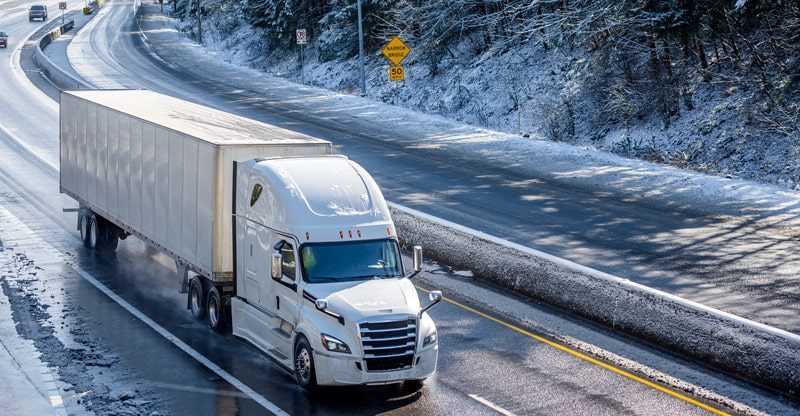How To Keep Your Freight From Freezing During Winter Shipment
Shipping freight in the winter has its special challenges – and the biggest one can be keeping your freight from freezing. Freezing temperatures can destroy your freight and that costs you money that your company can’t afford. You need to take precautions to keep your freight unfrozen during wintertime shipping.
The first step is knowing what freight is vulnerable to freeze damage. Make sure you move it in climate-controlled trailers. Protect your freight from the cold with insulated packaging. Look ahead to anticipate the kinds of problems that might arise during wintertime shipping, so you can be ready to make changes on the fly that will save your freight.
Is Your Freight at Risk of Freeze Damage?
You might be surprised at the number of things that can be damaged by freezing in transit. Liquids can expand when freezing and burst or shatter their bottles. Fresh foods, flowers, and live plants obviously need to be kept warm during shipping in the winter. But those aren’t the only things that need to be protected from freezing.
For example, freezing temperatures can affect the oils in coffee, damaging its flavor profile. Cosmetics can separate and will never be the same again after freezing. Wood can warp if allowed to freeze in transit. Electronics can break if they’re exposed to freezing temperatures, especially if they’re not allowed to warm up before being put to use.
And, of course, things like batteries, paint, and pharmaceuticals can all sustain damage from freezing. Understand the risk freezing poses to your freight, so you can take the right steps to prevent it.
Move Your Freight in Climate-Controlled Trailers
If you can use climate-controlled trailers to move your freight in the winter, then do it. Even refrigerated trailers are better than non-controlled trailers, because they’ll still keep your freight at a consistent temperature above freezing. Some carriers also offer heated trailers for moving temperature-sensitive freight in the winter.
Know Your Shipping Route
When you’re shipping freight in the winter, you need to be more cautious about the routes you choose. Some high-altitude routes may be blocked by snow, for example. Some routes impose weight limits during the winter, or even during the freeze-and-thaw spring and fall seasons, because heavy trucks are more likely to damage roads in the winter. Some regions may experience wild temperature variations during the day or from one day to the next.
By planning out your route ahead of time, you can avoid sending your temperature-sensitive shipments through particularly cold areas or asking your truck drivers to navigate winding mountain roads that have become impassable due to snow. Of course, with climate change making weather patterns more unpredictable, it can be hard to bypass the worst sections of a route, but it’s still worth the effort.
Insulate Your Freight Against the Cold
Insulating your freight can do a lot to protect it from freezing temperatures. Insulation starts at the crate or box level. Use styrofoam panels, thermal linings, or heat packs inside boxes to keep contents warm. Wrap pallets in insulating blankets or pallet covers. Ask your carrier about using insulated trailers or shipping containers.
Anticipate Wintertime Supply Chain Problems
There are always going to be problems with the supply chain, but they tend to be more common and more severe during the winter. Trucks get into more accidents in the winter, when road conditions are more hazardous.
Sometimes trailers end up parked outside all weekend instead of being stored in a warm warehouse. You need to keep an eye on your freight. Use GPS trackers to monitor your freight’s location as it moves towards its destination. Insert freeze indicators into your shipping crates so you’ll know if something has frozen in transit, even if it’s already thawed out by the time it arrives.
By anticipating the problems that might crop up with wintertime shipments, you can take precautions against them. You can add time to your shipping schedule to make up for delays that occur when road conditions are bad. You can plan your routes in advance for maximum efficiency.
You can make sure you have enough drivers to keep your freight moving and still allow everyone adequate time to rest. You can make sure you’re moving full truckloads to maximize efficiency and minimize your carbon footprint.
When it comes to winter shipping, you need to take every possible precaution to keep your freight from freezing. Freeze damage can ruin your shipment entirely, and leave you with nothing but big bills for cleaning up and disposing of the damaged freight. Take a stand against winter weather, and protect your freight from freezing.



